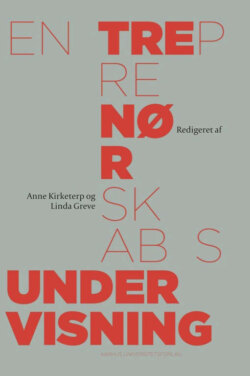Читать книгу Entreprenorskabsundervisning - Группа авторов - Страница 28
На сайте Литреса книга снята с продажи.
Litteratur
ОглавлениеBager, L., P. Blenker, P. Rasmussen & C.Thrane (2010). Entreprenørskabsundervisning – Proces, refleksion og handling. Aarhus: Aarhus Entrepreneurship Centre.
Bartlett, Sir F.C. (1932). Remembering: A Study in Experimental and Social Psychology. Cambridge: Cambridge University Press.
Barsalou, L.W. (2008). Grounded Cognition.In The Annual Review of Psychology, 2008:59:617-645.
Casasanto, D. & K. Dijkstra (2010). Motor Action and Emotional Memory. In Cognition, 115(1), 179-185.
Clark, A. (1998). Being There – Putting Brain, Body and World Back Together Again. Cambridge MA: MIT Press.
Damasio, A. (2006). Descartes’ Error: Emotion, reason and the human brain. London: Vintage.
Dodd, S.D. (2002). Metaphors and meaning. A grounded cultural model of US entrepreneurship. In Journal of Business Venturing, 17(2002), 519-535.
Frith, C. (2007). Making up the mind – How the Brain Creates Our Mental World. Oxford: Blackwell Publishing.
Greve, L. (2010). Den gode præsentation – Akademisk mundtlig fremstilling og personlig kommunikation. København: Samfundslitteratur.
Greve, L. & S. Hildebrandt (2011). Forandrende Ledelseskommunikation. Metaforer i organisationer. København: Samfundslitteratur (under udgivelse).
Johnson, M. (2008). Philosophy’s debt to metaphor. In R.W. Gibbs, Jr., (red.): The Cambridge Handbook of Metaphor and Thought. Chicago: The University of Chicago Press.
Lakoff, G. (2008a). Women, Fire and Dangerous Things – What Categories Reveal About the Mind. Chicago: The University of Chicago Press.
Lakoff, G. (2008b). The Neural Theory of Metaphor. In R.W. Gibbs, Jr. (red.): The Cambridge Handbook of Metaphor and Thought. Chicago: The University of Chicago Press.
Lakoff, G. & M. Johnson (1980). Metaphors we live by. Chicago: The University of Chicago Press.
Lakoff, G. & M. Johnson (2002). Why cognitive linguistics requires embodied realism. In Cognitive Linguistics 13-3(2002), 245-263.
Luft, J. (1961). The Johari Window: A Grafic Model of Awareness in Interpersonal Relations. In NTL’s Human Relations Training News, 1961, 5(1), 6-7.
McCroskey, J.C. (2006). An Introduction to rhetorical communication: A western cultural perspective. Allyn and Bacon.
Morgan, G. (2006). Images of Organizations. London: Sage Publications Inc.
Nech, H.M. & P.G. Greene (2010). Entrepreneurship Education: Known Worlds and New Frontiers. In Journal of Small Business Management, Vol.49, Issue1:55-70.
Sarasvathy, S. (2008). Effectuation: Elements of entrepreneurial expertise. Cheltenham Glos, UK, Northampton, MA: Edward Elgar.
Shane, S. & S. Venkataraman (2000). The promise of entrepreneurship as a field of research. In Academy of Management Review, 25(1): 217-226.
Scharmer, C.O. (2001). Self-transcending Knowledge: Sensing and organizing around emerging opportunities. In Journal of Knowledge Management, 2001, Vol. 5, Issue 2:137.
Scharmer, C.O. (2008). Theory U – Leading from the Future as it Emerges. Cambridge MA: SoL.
Vanderstraeten, R. (2002). Parsons, Luhmann and the Theorem of Double Contingency. In Journal of Classical Sociology, Vol. 2(1):77-92.
